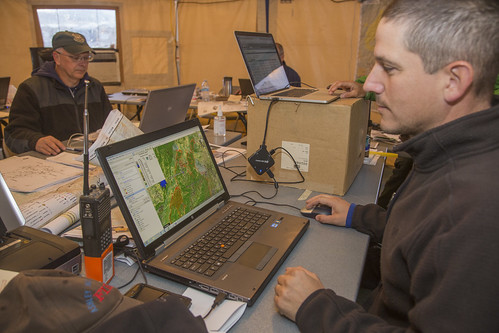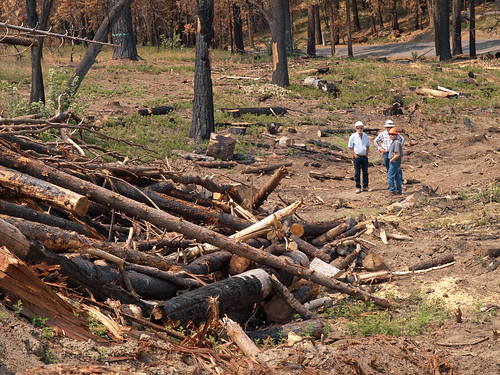
Creating forests that can adapt and survive natural disturbances like wildland fires is a core mission of the USDA Forest Service. As has been recently witnessed by millions of TV viewers across the county, forests in California need to be able to bounce back following disturbances so that horrific tragedies like the mudslides near Santa Barbara can be greatly mitigated or completely avoided.
One of the tools available to address the issue of landscape management and prepare for the unexpected and expected is BAER or Burned Area Emergency Response.
BAER is a multi-agency group that includes the Forest Service and other organizations, and is responsible for identifying potential threats such as downstream flooding and developing plans to rehabilitate and restore burned areas.
BAER teams target immediate efforts to prevent threats to people, wildlife and the land. Using burn severity maps produced by BAER teams, experts can quickly and efficiently pull together information on pre- and post-fire conditions. For example, knowing where to apply mulch after a fire can reduce runoff and erosion and can help minimize downstream risks from fire induced land cover and soil changes.
However, it’s vitally important to point out that BAER’s mission is not to stop all fires. Fire is a natural and critical agent of wildland change. This is why removing fire from the equation is not part of the BAER team’s mission, but reducing the intensity of future forest fires is a part of the overall mission.
So once a wildfire has been suppressed, the work is far from done. In fact, much of the most long lasting challenges and dangers to life and property emerge after the fire is out. And BAER teams respond to burned areas following wildfires and coordinate with local and state agencies to assess risks of flood and debris. Much of this work also includes warning the public of potential dangers they may face to life, property, and quality of life.
These interdisciplinary teams are comprised of experts from a variety of disciplines: hydrologists, soil scientists, engineers, biologists, vegetation specialists, archeologists, and others who rapidly evaluate the burned area and prescribe emergency stabilization treatments. A BAER assessment usually begins before the wildfire has been fully contained. These teams and are focused on protecting life, property, water quality, and deteriorated ecosystems from further harm after the fire is out.
BAER teams evaluate and work to identify and prevent further problems that can emerge in a burned area. These problems could include debris flows caused by erosion from vegetation loss, runoff that may increase flooding, sediments that move downstream and damage property or fill reservoirs, and threats to community water supplies and endangered species.
Any treatments have to be installed as soon as possible if treatments are to be effective in protecting life and property. This means BAER assessments usually begin before the wildfires are even contained. These scientists and specialists will don fire gear and head to the burned areas while suppression takes place around them.
BAER is managing wildlife landscapes to better protect life and property from the next unexpected and expected wildland fire and its aftermath.

